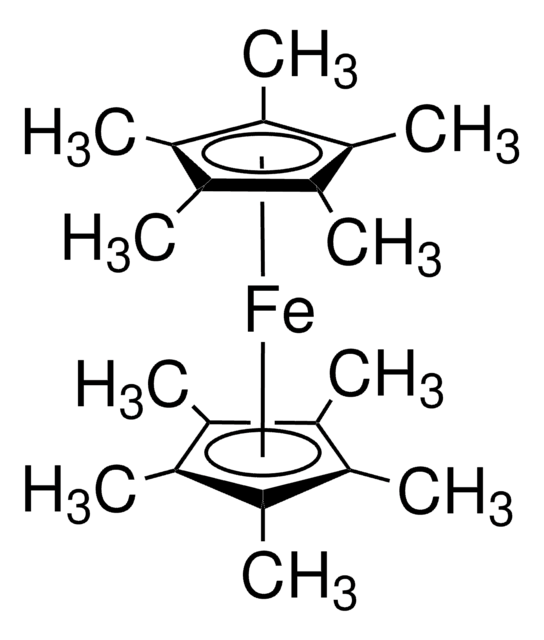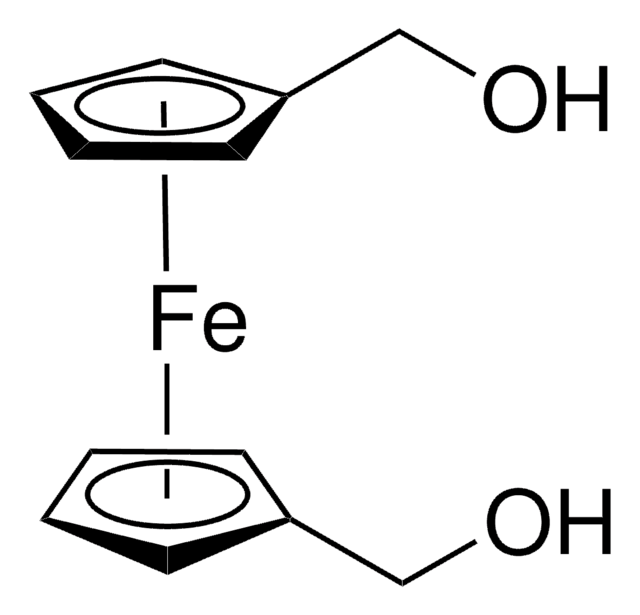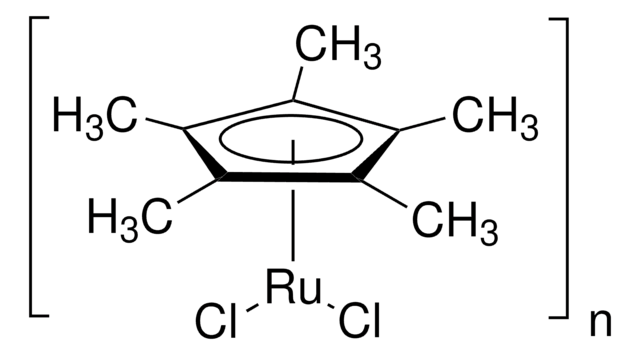303690
Hexaamminruthenium(II)-chlorid
99.9% trace metals basis
Synonym(e):
Ruthenium(III) chloride hexaammoniate
About This Item
Empfohlene Produkte
Assay
99.9% trace metals basis
Form
solid
Eignung der Reaktion
reagent type: catalyst
core: ruthenium
Verunreinigungen
≤1500.0 ppm Trace Metal Analysis
Löslichkeit
H2O: slightly soluble(lit.)
Lagertemp.
2-8°C
SMILES String
N.N.N.N.N.N.[Cl-].[Cl-].[Ru++]
InChI
1S/2ClH.6H3N.Ru/h2*1H;6*1H3;/q;;;;;;;;+2/p-2
InChIKey
SHHNQLHKJVODTN-UHFFFAOYSA-L
Allgemeine Beschreibung
Signalwort
Warning
Gefahreneinstufungen
Acute Tox. 4 Oral - Eye Irrit. 2 - Skin Irrit. 2 - STOT SE 3
Zielorgane
Respiratory system
Lagerklassenschlüssel
11 - Combustible Solids
WGK
WGK 3
Flammpunkt (°F)
Not applicable
Flammpunkt (°C)
Not applicable
Persönliche Schutzausrüstung
dust mask type N95 (US), Eyeshields, Gloves
Analysenzertifikate (COA)
Suchen Sie nach Analysenzertifikate (COA), indem Sie die Lot-/Chargennummer des Produkts eingeben. Lot- und Chargennummern sind auf dem Produktetikett hinter den Wörtern ‘Lot’ oder ‘Batch’ (Lot oder Charge) zu finden.
Besitzen Sie dieses Produkt bereits?
In der Dokumentenbibliothek finden Sie die Dokumentation zu den Produkten, die Sie kürzlich erworben haben.
Kunden haben sich ebenfalls angesehen
Artikel
Hydrogen is one of the most important resources in providing food, fuel, and chemical products for our everyday life. Sustainable catalytic hydrogen production from bioethanol has gained significant attention in recent years due to globally diminishing fossil fuel supplies, which have necessitated the search for new chemical feedstocks.
Unser Team von Wissenschaftlern verfügt über Erfahrung in allen Forschungsbereichen einschließlich Life Science, Materialwissenschaften, chemischer Synthese, Chromatographie, Analytik und vielen mehr..
Setzen Sie sich mit dem technischen Dienst in Verbindung.














